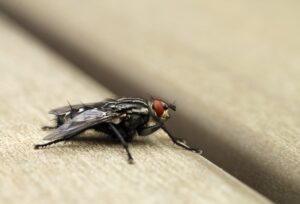Flies are among the most bothersome when it comes to common household pests. But did you know there may be several types of flies buzzing around your home? Distinguishing between house flies and cluster flies can help you better control the pesky insects and prevent them from invading your home.
What are cluster flies?
Cluster flies are a type of fly that seek shelter in homes and other structures during the winter. They measure about eight to ten millimetres in length. They have yellow hairs on their thorax and have dark-grey and light-silvery checkerboard-like patches on their abdomen. When at rest, their wings typically overlap each other. Cluster flies also tend to fly slowly and sluggishly. Cluster flies are drawn to light and are not drawn to the food sources that attract house flies.
Cluster fly treatment
If a cluster fly infestation occurs, here are a few treatment options:
- Kill the flies with a fly swatter or use a vacuum cleaner to remove cluster flies from surfaces
- Use insect light traps to collect the flies
- Avoid using insecticides in indoor areas where dead and dying flies could attract other insects like beetles and rodents
- Seek professional help for large infestations
Cluster fly prevention
To prevent cluster flies from entering your home, act during the summer before they start looking for a winter haven.
- Inspect and seal any cracks, crevices, or gaps in windows, doors, siding, and roofs where cluster flies can gain access
- Ensure windows and vents are properly fitted with screens
- Adequate insulation sealing holes in your attic can help prevent cluster flies from seeking refuge
- Treat the cracks and crevices on the exteriors of buildings with a residual insecticide before the weather stays cool at night
It’s important to note that cluster flies won’t propagate inside your home, as the eggs are laid in soil, and larvae feed on earthworms.
What are house flies?
House flies are a common fly species found in and around homes. Other species of similar-looking flies such as blow flies are also often called house flies. House flies are small, measuring about five to eight millimetres in length. They have a gray thorax with four dark stripes and a slightly larger abdomen. House flies have a single pair of wings that extend beyond the length of their abdomen.
House fly treatment
To control house fly populations, consider these options:
- Place sticky traps or flypaper near areas where house flies are commonly seen.
- Use fly-specific insecticides to treat affected areas, such as fly breeding sites or areas with high fly activity. Follow label instructions carefully.
House fly prevention
House flies are drawn to food, garbage, and decaying organic material, so follow these house fly prevention tips:
- Keep your home clean and free of food debris, spills, and garbage
- Seal and store food in airtight containers
- Ensure trash bins have tightly sealed lids and are regularly emptied and cleaned
Insect control in Manitoba, Saskatchewan, and Alberta
If flies are a nuisance in your home, call the experts at Poulin’s Pest Control. We can identify the type of fly and their feeding and breeding sites to take the necessary steps to ensure your home remains fly-free. Contact us today to book an appointment.

